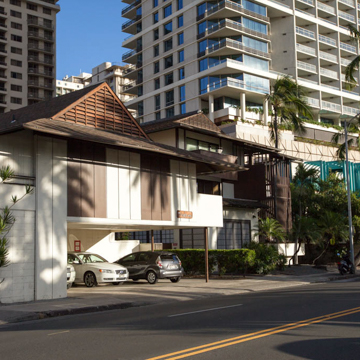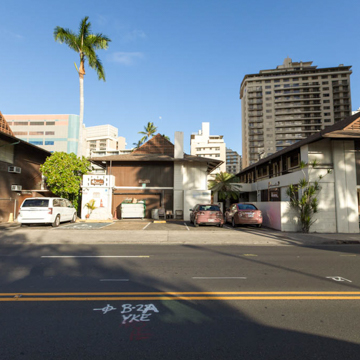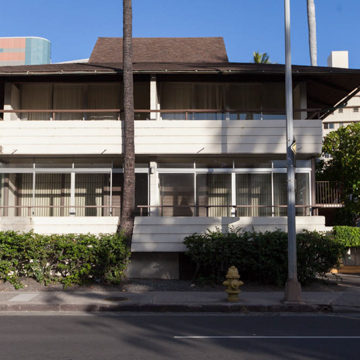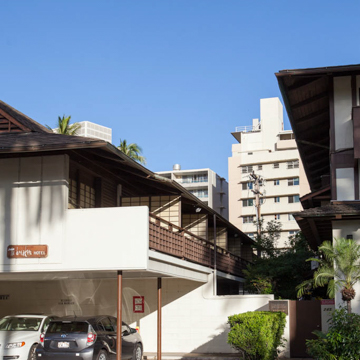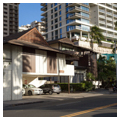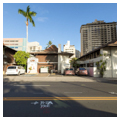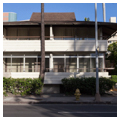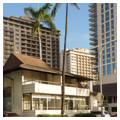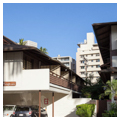An oasis in the midst of high-rise Waikiki, the placid two-story, sixty-four-unit Breakers Hotel exudes tropic conviviality. Organized around a verdant courtyard with a centered swimming pool, the hipped-gablet-roofed buildings open to nature via their louvered panels and shōji. Clean Japanese detailing continues in the lanai's paneled balustrades and is also apparent in the single-story pool-side snack bar and lounge. The wall adjoining the lounge is adorned with a delightful, oceanic mural by Maile Yawata and Jan Hansen (1987), replete with fish and a swimming maiden, a reflection of a simpler time. When the hotel opened, Hugh Lytle wrote in the Honolulu Advertiser that its style was “a blend of modern, Oriental, and Polynesian without clashing of nationalities or periods.” The hotel included kitchens in all the rooms, catering to the more economy-minded visitors who appeared in increasing numbers following World War II.
You are here
Breakers Hotel
If SAH Archipedia has been useful to you, please consider supporting it.
SAH Archipedia tells the story of the United States through its buildings, landscapes, and cities. This freely available resource empowers the public with authoritative knowledge that deepens their understanding and appreciation of the built environment. But the Society of Architectural Historians, which created SAH Archipedia with University of Virginia Press, needs your support to maintain the high-caliber research, writing, photography, cartography, editing, design, and programming that make SAH Archipedia a trusted online resource available to all who value the history of place, heritage tourism, and learning.


